The Ultimate Guide to Solar Cost Savings Calculation
The financial aspects of solar energy systems can often seem overwhelming. Understanding the various costs involved, from installation to long-term savings, is essential for homeowners considering this investment. Factors such as federal incentives and state rebates play a vital role in shaping overall savings. However, the intricacies of calculating return on investment can be complex. What specific strategies can maximize these potential benefits? Exploring this question reveals important insights.
Understanding Solar Panel Costs
When evaluating the financial implications of solar energy, understanding the costs associated with solar panels is essential for homeowners and businesses alike. The primary expense in solar energy adoption stems from the purchase and installation of solar panels. Prices can vary greatly based on technology type, quality, and system size. Additionally, labor costs for installation, which include the complexity of the project and local labor rates, can also influence total expenses. Maintenance costs should also be considered, although solar systems typically require minimal upkeep. Moreover, potential savings from energy bills and available tax incentives or rebates can offset initial expenditures. Ultimately, comprehending these costs is vital for making informed decisions regarding solar investments and maximizing long-term financial benefits. Furthermore, understanding the benefits of renewable energy can further enhance the justification for investing in solar technologies.
Factors Affecting Solar Installation Prices
Several factors influence solar installation prices, including the system size, geographic location, and available incentives. Larger systems generally incur higher costs, while regional variations can affect pricing due to local market conditions and regulations. Additionally, government incentives can considerably reduce overall expenses, making solar energy more accessible. Understanding the benefits of sustainable living can further encourage the adoption of solar energy solutions.
System Size Impact
As the size of a solar installation increases, the overall cost per watt typically decreases, reflecting economies of scale. Larger systems often benefit from reduced material and labor costs, as suppliers may offer bulk pricing for components such as solar panels and inverters. Additionally, installers can optimize their time and resources more effectively with bigger projects, leading to lower installation costs on a per-watt basis. Conversely, smaller systems may incur higher costs per watt due to fixed expenses that are distributed over a smaller energy output. Consequently, consumers should carefully evaluate their energy needs and potential system sizes to maximize cost-efficiency while minimizing the overall investment in solar technology.
Location and Incentives
While the overall cost of solar installations can be greatly impacted by location and available incentives, these factors often vary widely across different regions. Geographic location influences installation prices due to differences in sunlight exposure, local energy rates, and labor costs. For instance, states with abundant sunlight, like Arizona, may see lower costs compared to those with less sun. Additionally, government incentives, such as tax credits and rebates, can markedly reduce upfront expenses. Regions that offer robust solar programs tend to attract more installers, increasing competition and potentially lowering prices. Understanding the specific incentives available in one’s area is essential for accurately calculating the overall cost savings associated with solar energy investments.
Federal Incentives and Tax Credits
Federal incentives and tax credits play a vital role in reducing the overall cost of solar installations. An overview of the federal tax credit, along with various state incentive programs, highlights the financial benefits available to homeowners and businesses. Understanding eligibility requirements is essential for maximizing these savings. Additionally, the concentration of power within the solar industry can influence the availability and distribution of these incentives.
Federal Tax Credit Overview
Numerous homeowners and businesses can considerably benefit from federal tax credits designed to promote solar energy adoption. The most significant federal incentive is the Investment Tax Credit (ITC), which allows individuals and businesses to deduct a percentage of the cost of their solar system from their federal taxes. As of 2023, the ITC offers a credit of 30% for systems installed by the end of the year, providing substantial savings. This credit applies to both residential and commercial systems, encouraging widespread implementation. It is essential for potential solar adopters to understand the eligibility criteria and documentation required to claim these benefits, ensuring they maximize their financial incentives while contributing to a sustainable energy future.
State Incentive Programs
Many states offer their own incentive programs to complement federal tax credits for solar energy systems. These state-level initiatives can greatly enhance the financial viability of solar installations. Incentives may include rebates, grants, performance-based incentives, or tax exemptions that vary widely from one state to another. Some states also implement renewable portfolio standards, requiring utilities to procure a certain percentage of their energy from renewable sources, which can lead to additional savings for solar users. In addition, local governments may offer property tax abatements or sales tax exemptions on solar equipment. By taking advantage of these state programs, homeowners and businesses can additionally reduce the overall cost of their solar investments, leading to faster payback periods and increased return on investment.
Eligibility Requirements Explained
Understanding the eligibility requirements for federal incentives and tax credits is vital for maximizing the financial benefits of solar energy installations. To qualify for the federal Investment Tax Credit (ITC), homeowners must install solar panels on their primary or secondary residences, with the system being new and operational during the tax year. It is important that the solar installation meets specific safety and performance standards set by the government. Additionally, taxpayers must possess sufficient tax liability to benefit from the credits. Other incentives, such as grants or rebates, may have their own unique criteria, often including geographic restrictions or income thresholds. Staying informed about these requirements guarantees individuals can effectively utilize available financial incentives for their solar projects.
State and Local Rebates
State and local rebates play an important role in reducing the overall costs associated with solar energy installations. These financial incentives, offered by various state governments and local municipalities, can greatly lower the upfront expenses for homeowners and businesses considering solar systems. Rebates vary widely in amount and eligibility criteria, often depending on factors such as system size and location. Some areas may provide substantial rebates that can cover a considerable portion of installation costs, while others may offer smaller incentives. By researching available rebates, individuals can identify potential savings and enhance the financial viability of adopting solar technology. Understanding these local programs is essential for maximizing savings in the shift to renewable energy sources. Additionally, many organizations are recognizing the importance of work-life balance as more individuals consider renewable energy solutions for their homes.
Long-Term Savings on Energy Bills
While the initial investment in solar energy systems may seem intimidating, the long-term savings on energy bills can greatly outweigh these upfront costs. Over time, homeowners can considerably reduce or even eliminate their electricity bills, depending on the size of their solar installation and energy consumption. As utility rates continue to rise, the financial benefits of solar energy become increasingly pronounced. Additionally, many systems can last 25 years or more, providing decades of savings. The initial costs can be recouped through these savings, making solar a financially viable option. Moreover, producing one’s own energy enhances energy independence, insulating homeowners from future price fluctuations in the energy market. Essentially, solar energy presents a smart investment for long-term financial stability. Furthermore, the integration of AI in healthcare can help homeowners optimize their energy usage patterns, leading to even greater savings.
Financing Options for Solar Energy
Homeowners exploring solar energy options often find that various financing solutions can make the shift more accessible and affordable. One popular choice is solar loans, which allow homeowners to borrow funds specifically for the installation of solar panels. These loans typically offer competitive interest rates and flexible repayment terms. Another option is leasing solar systems, where homeowners can use solar power without the upfront costs, paying a monthly fee instead. Power Purchase Agreements (PPAs) also provide an alternative, enabling homeowners to buy the electricity generated by the solar system at a predetermined rate. Additionally, government incentives and tax credits can further reduce initial costs, making solar energy an increasingly viable investment for many homeowners.
Calculating Your Return on Investment
Evaluating the return on investment (ROI) for solar energy systems involves analyzing both immediate savings and long-term benefits. Homeowners can start by calculating the total installation costs, including equipment, labor, and any applicable incentives. Next, they should estimate annual savings on electricity bills and potential increases in property value. Comparing these savings to the initial investment provides a clear picture of ROI. Additionally, considering factors like system lifespan, maintenance costs, and energy price inflation can enhance the accuracy of the ROI calculation. A positive ROI indicates that the solar system is a financially sound investment, while a negative ROI suggests reconsideration of the project’s viability. This analysis is vital for understanding the financial implications of solar energy adoption.
Real-Life Case Studies of Solar Savings
As the adoption of solar energy grows, real-life case studies illustrate the tangible savings that homeowners can achieve. For instance, a family in California installed a solar system, leading to a 70% reduction in their monthly electricity bills. Over a 20-year period, they estimated savings of approximately $30,000. Similarly, a homeowner in Florida reported a return on investment in just five years, offsetting installation costs through state incentives and reduced energy payments. In Massachusetts, another family utilized net metering, earning credits for excess energy produced, which further lowered their utility expenses. These examples demonstrate that with careful planning and local incentives, solar energy not only provides environmental benefits but also significant financial advantages for homeowners.
Frequently Asked Questions
How Do Solar Panel Warranties Affect Overall Cost Savings?
The impact of solar panel warranties on overall cost savings is significant; they guarantee performance reliability and protect against defects, potentially reducing future repair costs. This contributes to long-term financial benefits for solar system owners.
Can I Install Solar Panels Myself to Save Money?
The feasibility of self-installing solar panels varies. While it can reduce initial costs, improper installation might lead to inefficiencies or safety hazards. It is essential to weigh potential savings against the risks and required expertise.
What Maintenance Costs Should I Expect With Solar Panels?
The maintenance costs for solar panels typically include periodic cleaning, inspections, and potential repairs. Homeowners should anticipate a yearly expense ranging from $100 to $300, depending on system size and local service rates.
How Do Energy Prices Impact My Solar Savings Calculations?
Energy prices greatly affect solar savings calculations; higher utility rates enhance the financial benefits of solar investments. Conversely, declining energy prices may reduce anticipated savings, making accurate assessments essential for potential solar adopters.
Are There Hidden Costs in Solar Panel Installation?
The question of hidden costs in solar panel installation is significant. Factors such as permits, inspection fees, installation complexities, and maintenance can unexpectedly inflate the overall expense, impacting the anticipated financial benefits of solar energy systems.
Conclusion
In summary, the Ultimate Guide to Solar Cost Savings Calculation equips homeowners with essential knowledge to make informed decisions about solar investments. By understanding installation costs, available incentives, and long-term savings, individuals can effectively evaluate their potential ROI. The guide also highlights the significance of local rebates and financing options, ensuring that users can maximize their savings while traversing eligibility requirements. Ultimately, embracing solar energy emerges as a smart financial choice for sustainable living.



